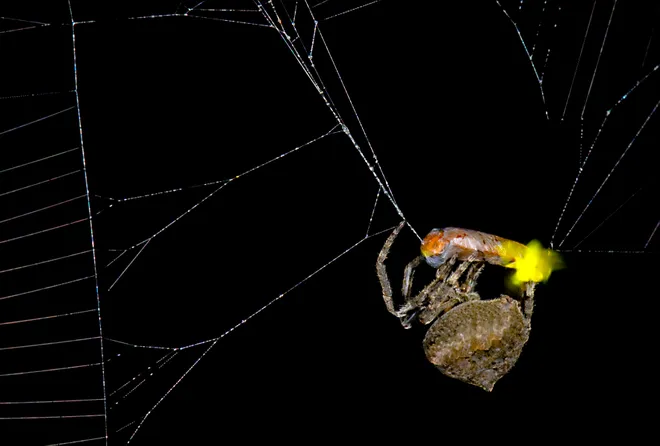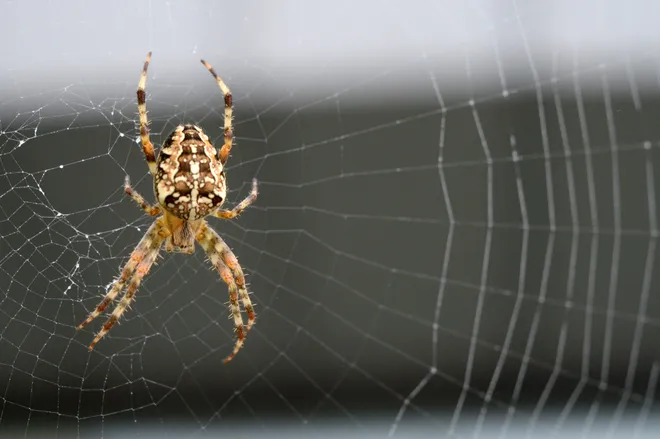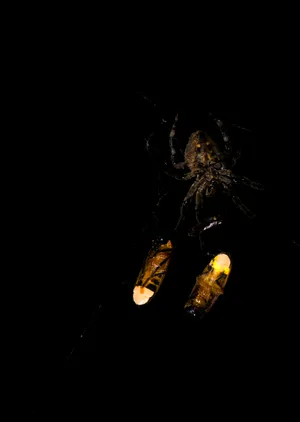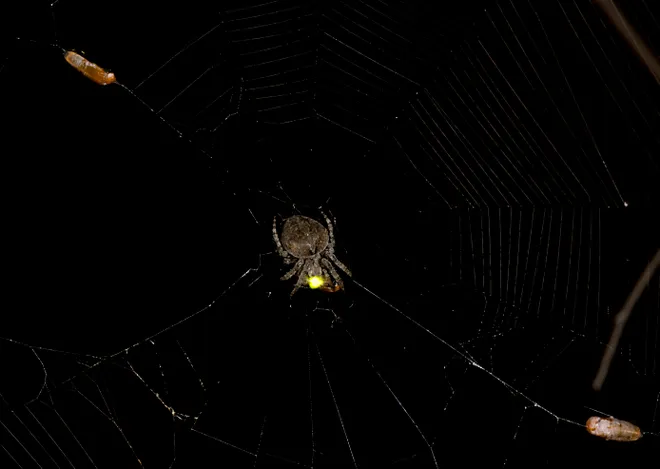How smart are spiders? They zombify their firefly prey: 'Bloody amazing'
Oh what a tangled web we weave, when first we practice to deceive.
Scientists now know some spiders are smart enough to do both, bringing fresh meaning to the famous quote from poet Sir Walter Scott. The discovery? Spiders are actually using prey caught in their tangled web to deceive more prey, attracting them to get stuck in the web too.
Specifically, scientists discovered a common spider, called an orb-weaver, is having a lot of success trapping fireflies, by first catching one and then manipulating its glowing bulb to attract and catch many more.
"It's acting like a zombie firefly," said Linda Rayor, a professor of spider biology at Cornell University, calling the discovery "bloody amazing."
The study, published in the journal Current Biology this week, is based on the behavior of an orb-weaver spider found throughout China, Japan and Korea. Researchers in China found the spiders were able to catch many more male fireflies through utilizing the light patterns of the first 'zombie' firefly they caught. But the scientists are still trying to figure out how the spider is able to manipulate the firefly's light, and there are many possibilities, the paper says.

The findings are so significant because arachnid experts can't point to other examples of spiders manipulating the behavior of prey caught in their net to catch more prey, Rayor said.
"As far as I know, this is absolutely unheard of in other spiders," said Rayor, who is also the current president of the American Arachnological Society.
Another leading spider expert, Rick Vetter, told USA TODAY the same.
“This is the first case I’ve heard of using a live animal for a lure," said Vetter, a longtime spider researcher at the University of California Riverside. “It’s pretty impressive.”

How does the spider use the firefly's light?
After a male firefly gets stuck in a spider's web, the spider gets the bug to flash the magic light sequence that attracts male fireflies to a female. Other males see the light and think it's a female they can mate with and fly into the web.
"Spiders are really complicated animals, capable of all sorts of really cool behavior, but this kind of manipulation is awesome and relatively rare," Rayor said.
What's more, this behavior of the spider and the male firefly is like "a modification of what's called femme fatale fireflies," Rayor said, which is when a female firefly modifies her own light sequence to attract male fireflies from other species, and then eats them.

The web that the spider is using to catch the first firefly, and many more, is just the typical, two-dimensional spider web many people may recognize in Halloween decorations, said Vetter, who is one of the foremost experts on the brown recluse spider.
"The web is nice and neat and circular," Vetter told USA TODAY.

How does the spider zombify the firefly?
Scientists in China said they're still trying to figure out how the orb-weaving spider managed to get the male firefly to change its light sequence to that of a female.
There are a few possibilities: The spider is biting the firefly, the spider weaves it silk around the firefly, or the spider's venom is affecting the firefly.

One thing is for sure, based on the scientists' "unequivocal" data, Rayor said: "They're absolutely getting many more male fireflies in the web that the spider is then able to eat."
Both Rayor and Vetter said this latest discovery about spiders is further evidence of just how ingenious the arachnids are − a fact most humans overlook, they said.
“Animals do amazing things if you start paying attention to them," Vetter said.
Disclaimer: The copyright of this article belongs to the original author. Reposting this article is solely for the purpose of information dissemination and does not constitute any investment advice. If there is any infringement, please contact us immediately. We will make corrections or deletions as necessary. Thank you.




